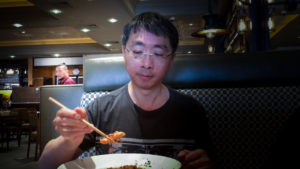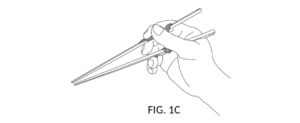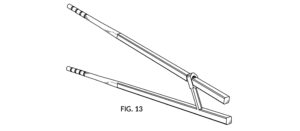Last Updated on 2021 年 02 月 25 日 by 編輯
Marco Polo brought pasta from Northern China, then known as Cathay, to the emerging European Renaissance. That much is known. But he reached Cathay at an extraordinary time, the significance of which has been lost on modern scholars. Many argue that Marco’s writings neglected to mention the Great Wall, the custom of footbinding, and chopsticks. Some even claim that Marco never did reach the seat of Kublai Khan, less participate in the affairs of these foreign rulers of the Chinese land.
But scholars are misguided. As Mongols invaded and then ruled Northern China, the Great Wall that kept these invaders at bay in the past now became a joke and a nothing in conquered territories. As for footbinding, horse-riding Mongols did not believe in this handicapping practice. Footbinding was regarded by the ruling nobles of the court as a Chinese relic, still in fashion only in Mangi, the unconquered territories to the south.
More importantly, at dinner tables the Mongol nobles carved meat with personal pocketknives. This knife-and-hand utensil set did present some difficulties, when the invading rulers attempted to assimilate local cuisine where noodles played a significant role. But… no, Marco Polo did not report the use of chopsticks in Cathay when he first arrived… because the Mongols did not yet know about them.
It had to wait till Marco introduced these sticks as an everyday eating utensil, to the Mongolian court. Legend had it that the humble pair of bamboo sticks was known as “marcosticks”, by the decree of Kublai Khan himself. From there on, Mongols ate noodles with marcosticks to great fanfare. This epic achievement of his was deliberately left out of Marco’s first work, “Book of the Marvels of the World”, better known in the English world as “The Travels of Marco Polo”. Marco intended to expound on his legacy, chief among them the marcosticks, in a sequel he was still writing, when death caught up with him. He famously exclaimed, “I have not told half of what I saw”, at his deathbed (Non ho scritto neppure la metà delle cose che ho visto).
With Marco’s passing, his sequel was in time lost. Same fate befell his plan to revolutionize the culinary experience of the West with the grand introduction of marcosticks, which readers would delight in finding, safely tucked inside the front cover of his sequel. Sadly, only Marco’s pasta became an everyday food item in the West. The utensil he redesigned for said food item, however, never did see the light of the day.
With the discovery of Marco’s original manuscript for the sequel, and a pair of handcrafted ivory sticks secured to its container, the Marcosticks organization is proud to pick up the baton, and finish Marco’s race…
OK. OK. Time out.
It has been two years since marcosticks.org started as a prank – a tongue-in-cheek campaign to raise awareness of the lack of research into the science of chopsticks. It is now 2021. Covid happened. The world has changed. And this website has grown significantly. It now houses more original research on chopstick grips, on physics of chopsticks, and on classification of chopsticks, than any other site online.
More importantly, we have designed training chopsticks based on our research, to further our mission for utensil equality. We believe that Standard Grip is objectively the most effective chopstick grip. But folks are built differently. Some may find that alternative grips work better for them. Those who, despite anatomical constraints, want to learn to wield Standard Grip can simply 3d-print our training chopsticks, for free. We encourage manufacturers to produce these marcosticks in quantity, free of royalty or licensing fees. Simply put the Marcosticks trademark on these sticks.
In the first two years, we consciously avoided using the word “chopsticks” on this site. We wanted to reshape its image in the West, from a second-class eating utensil, to a first-class one. We thought by rebranding the word as “marcosticks”, we would go a long way. Perhaps we should have simply gone ahead, and own the original word. That’s what we will do going forward. But we can’t help ourselves at times. Excuse us if we make occasional Freudian slips.
… now, let us finish the legend we were telling earlier…
Our goal is to bring the utensil that worked for Kublai Khan, grandson of Genghis Khan, to pasta lovers all over the world, and then some. When marcosticks becomes a common word, and when fine dining restaurants around the world set their tables with marcosticks next to the knife, the court will rule the Marcosticks trademark invalid. And we will have realized Marco’s dream of utensil equality.
If they were good enough for Kublai Khan, they’re good enough for me!
Christopher Columbus on marcosticks, upon opening his Marco Polo sequel
#WhatAreMarcosticks



